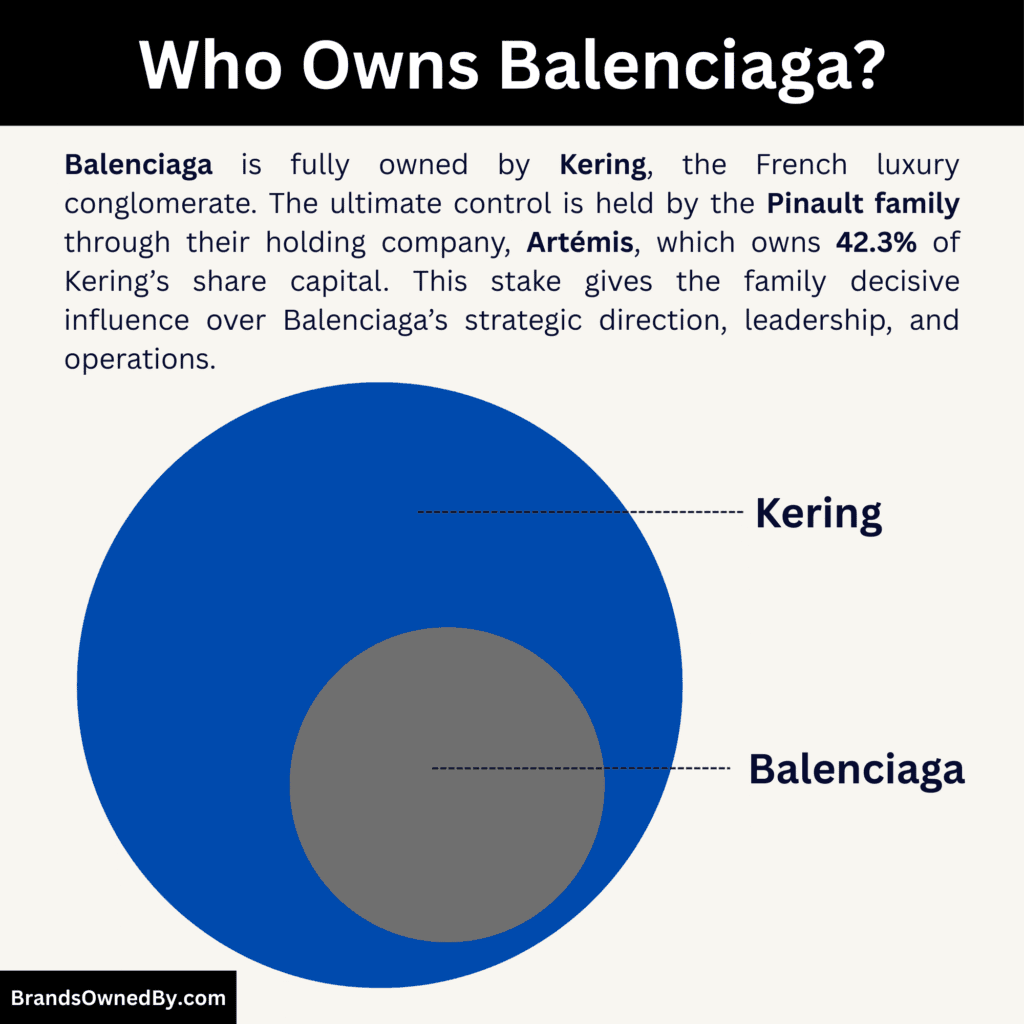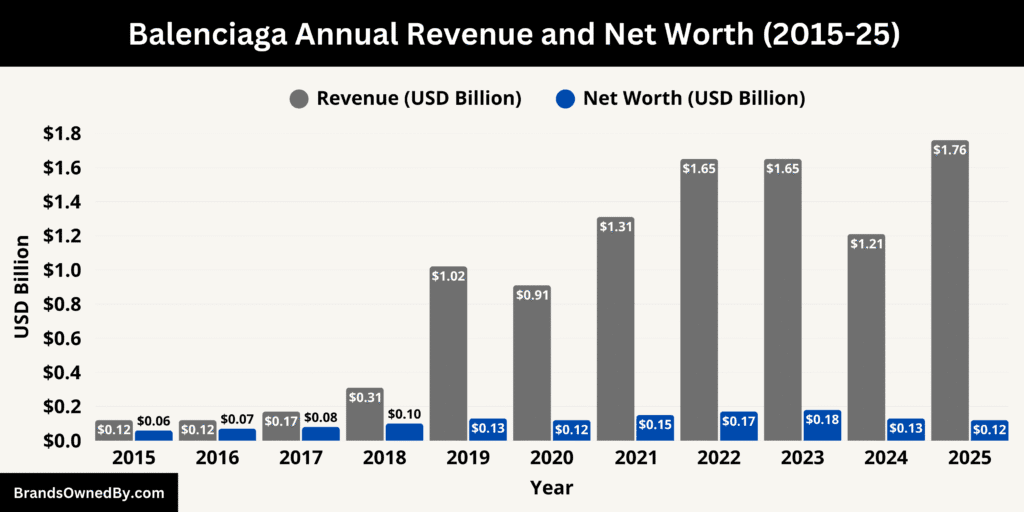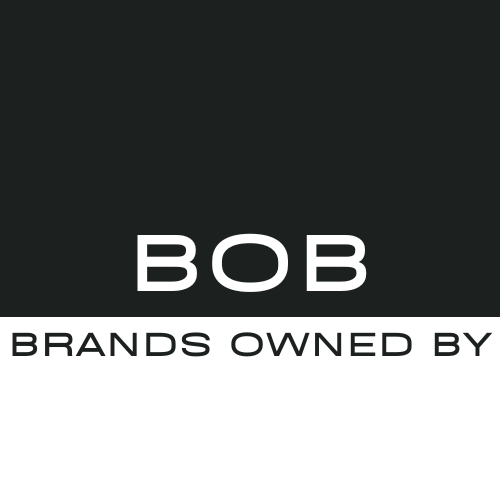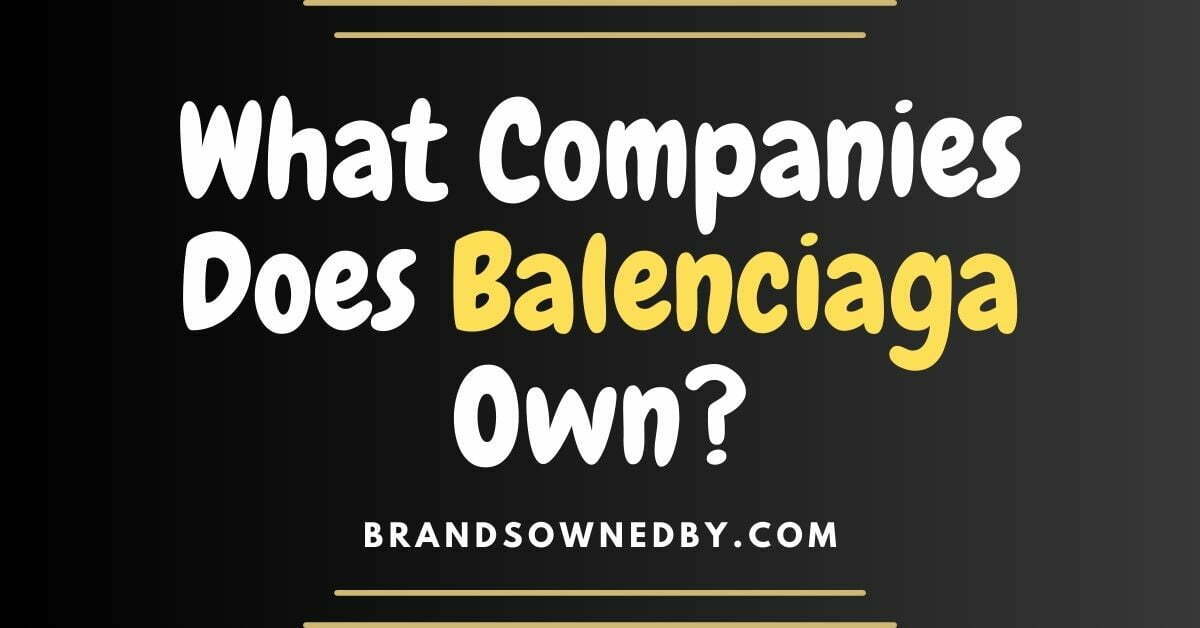What companies does Balenciaga own is a common search. The short answer is surprising to many. Balenciaga is a single luxury house. It is not a holding group that owns multiple fashion brands. It is owned by a larger group. Let’s find out in this detailed article.
Key Takeaways
- Balenciaga, founded in 1917 by Cristóbal Balenciaga, is a luxury fashion house fully owned by Kering, with a global presence in apparel, accessories, and footwear.
- The brand owns and operates Balenciaga Ready-to-Wear, producing seasonal collections for men and women that define global fashion trends.
- Balenciaga Footwear and Handbags & Leather Goods include iconic products like the Triple S sneakers and the City and Hourglass bags, forming key revenue streams.
- Other divisions include Accessories, Couture, Beauty & Fragrances, Retail Subsidiaries, and its E-commerce Platform, allowing the brand to manage products, stores, and online sales directly.
Balenciaga Company Profile
Balenciaga is a French luxury fashion house best known for avant-garde, experimental design and bold silhouettes. The brand operates in ready-to-wear, handbags, footwear, and accessories, along with perfumes and beauty through licensing and its parent group.
Today, it stands as one of the most influential labels under Kering, the French luxury conglomerate.
Unlike holding companies that own multiple brands, Balenciaga itself is a single house. Its creative influence has shaped global fashion for more than a century.
Founders
Balenciaga was founded in 1919 by Cristóbal Balenciaga, a Spanish couturier born in 1895.
He opened his first boutique in San Sebastián, Spain, before moving to Paris in 1937 due to the Spanish Civil War.
Cristóbal Balenciaga earned the reputation of being “the master of us all,” a phrase famously attributed to Christian Dior.
His mastery of tailoring, sculptural forms, and architectural designs transformed women’s fashion. Cristóbal retired in 1968 and passed away in 1972, leaving a lasting legacy as one of the greatest couturiers in history.
Major Milestones
- 1919 – Cristóbal Balenciaga founded his first boutique in San Sebastián, Spain.
- 1937 – Opened Balenciaga in Paris and debuted his first French collection.
- 1947 – Introduced the iconic “barrel line” silhouette, challenging traditional waist-focused fashion.
- 1951 – Launched the semi-fitted suit, influencing post-war women’s fashion.
- 1955 – Introduced the tunic dress, which later inspired the shift dress trend.
- 1957 – Presented the sack dress, a revolutionary design with no defined waistline.
- 1960 – Designed Queen Fabiola of Belgium’s wedding dress, cementing his global reputation.
- 1968 – Cristóbal Balenciaga retired and closed his Paris fashion house.
- 1972 – Cristóbal Balenciaga passed away in Valencia, Spain.
- 1986 – The Balenciaga brand was revived after nearly two decades.
- 1997 – Nicolas Ghesquière was appointed creative director, bringing new energy to the brand.
- 2001 – Gucci Group (now Kering) acquired Balenciaga, securing its global expansion.
- 2012 – Alexander Wang replaced Ghesquière as creative director.
- 2015 – Demna Gvasalia (known simply as Demna) was appointed creative director, ushering in a new streetwear-inspired era.
- 2017 – Balenciaga became one of the fastest-growing brands in Kering’s portfolio, thanks to sneakers like the Triple S.
- 2021 – Balenciaga returned to haute couture after 53 years, presenting its first couture collection since Cristóbal’s retirement.
- 2022 – Faced controversy over ad campaigns, leading to global attention and public scrutiny.
- 2023 – Kering announced plans to strengthen Balenciaga’s brand image and reposition it within the group.
- 2025 – Gianfranco Gianangeli appointed CEO, marking a new leadership era for the house.
List of Brands Owned by Balenciaga
Balenciaga functions as a single fashion house with multiple divisions, subsidiaries, and brand extensions that it owns and operates directly.
As of 2025, Balenciaga continues to expand its influence by running these divisions under its own name, while remaining part of the larger Kering group.
Below is a list of the major brands owned by Balenciaga as of September 2025:
| Company/Brand/Entity | Type/Category | Key Details |
|---|---|---|
| Balenciaga Ready-to-Wear | Fashion division | Core clothing line for men and women; seasonal collections shown in Paris. |
| Balenciaga Footwear | Footwear division | Own sneaker and shoe line; famous for Triple S and Speed Trainers. |
| Balenciaga Handbags & Leather Goods | Leather goods/accessories | Iconic bags like the City and Hourglass; key revenue driver. |
| Balenciaga Accessories | Accessories division | Eyewear, belts, jewelry, hats, and scarves; some via licensed partnerships. |
| Balenciaga Couture | Haute couture | Relaunched in 2021; fully owned couture atelier in Paris. |
| Balenciaga Beauty & Fragrances | Beauty & fragrance division | Balenciaga-branded perfumes and cosmetics; managed under Kering Beauté. |
| Balenciaga Retail Subsidiaries | Regional subsidiaries | Includes Balenciaga America Inc., UK Ltd., Japan Co. Ltd., etc. |
| Balenciaga E-commerce Platform | Online retail entity | Own-operated global online shop integrated with logistics and distribution. |
| Balenciaga Flagship Boutiques | Retail stores | Major stores in Paris, New York, London, Tokyo, Shanghai, and others. |
| Balenciaga Event & Exhibition Entities | Cultural/exhibition unit | Runs pop-ups, exhibitions, and immersive brand experiences worldwide. |
| Balenciaga Intellectual Property Holdings | Legal/IP entity | Owns trademarks, patents, and copyrights protecting Balenciaga globally. |
Balenciaga Ready-to-Wear
Balenciaga’s ready-to-wear division represents the creative heartbeat of the house. It includes seasonal men’s and women’s collections, often unveiled in Paris through innovative runway formats. This division is known for redefining silhouettes, oversized proportions, and bold reinterpretations of classic tailoring. Beyond high fashion, it sets global trends that influence mainstream clothing.
Balenciaga Footwear
The footwear line has grown into one of the most profitable categories for Balenciaga. It covers sneakers, boots, sandals, and heels, all designed with experimental shapes and technical materials. The Triple S sneaker became an industry phenomenon, while newer designs focus on futuristic, sculptural forms. The division also integrates sustainable practices, introducing recycled materials into select collections.
Balenciaga Handbags and Leather Goods
Leather goods are a cornerstone of Balenciaga’s luxury identity. The City Bag, released in the early 2000s, became a cult favorite, while the Hourglass bag has defined the brand’s modern accessories era. Each design is produced with premium leathers and detailed craftsmanship. The division has also expanded into wallets, cardholders, and travel goods, offering a full spectrum of luxury leather items.
Balenciaga Accessories
Balenciaga’s accessories division is both a fashion statement and a growth driver. It develops collections of eyewear, hats, scarves, and jewelry that complement the ready-to-wear looks. Eyewear is often bold and futuristic, while jewelry collections reflect the house’s edgy aesthetic. Although eyewear production may be licensed, the designs and creative direction remain under Balenciaga’s control, ensuring brand consistency.
Balenciaga Couture
The couture atelier was relaunched in 2021 after more than five decades of dormancy. It focuses on one-of-a-kind, made-to-measure garments for elite clientele. This division represents the house’s return to Cristóbal Balenciaga’s original spirit of craftsmanship. Each couture collection emphasizes handwork, architectural tailoring, and experimentation with form. The atelier also functions as a laboratory for design innovation that influences other product lines.
Balenciaga Beauty and Fragrances
Balenciaga Beauty extends the house into the luxury cosmetics and fragrance markets. While past fragrance rights were licensed, Balenciaga now manages these activities more closely with Kering’s beauty division. Perfumes carry the Balenciaga identity, blending bold packaging with refined scents. The division also explores skincare and cosmetics, strengthening the brand’s presence in lifestyle markets.
Balenciaga Retail Subsidiaries
To manage its worldwide presence, Balenciaga operates local subsidiaries in key markets. These entities handle legal compliance, taxes, hiring, and distribution in their regions. Subsidiaries such as Balenciaga America Inc. or Balenciaga UK Ltd. ensure smooth operations across continents. They allow the house to adapt to local consumer needs while keeping brand presentation consistent worldwide.
Balenciaga E-commerce Platform
Balenciaga’s e-commerce platform has become a crucial part of its retail model. The website is fully owned and controlled by the house, offering global shipping and localized experiences. It integrates with in-store systems, offering services such as virtual appointments and online exclusives. The platform also highlights digital-first campaigns, making it a key space for customer engagement and brand storytelling.
Balenciaga Flagship Boutiques
Flagship boutiques serve as immersive environments that embody the brand’s design philosophy. Stores in Paris, New York, London, and Tokyo feature interiors designed to reflect the house’s bold, industrial aesthetic. These boutiques often debut exclusive collections or limited editions not available elsewhere. Each flagship is a strategic cultural hub, attracting both loyal customers and fashion enthusiasts.
Balenciaga Event and Exhibition Entities
Balenciaga operates divisions dedicated to cultural experiences and special projects. These include pop-up stores, art exhibitions, and cross-industry collaborations. Recent years have seen immersive installations, partnerships with museums, and experimental showcases blending art and fashion. These initiatives extend the brand beyond traditional retail, building its identity as both a fashion house and a cultural influencer.
Balenciaga Intellectual Property Holdings
The intellectual property arm safeguards Balenciaga’s assets globally. This includes ownership of trademarks, logos, and proprietary designs registered in multiple markets. It also covers patents on innovative materials and technologies developed by the brand. This entity ensures Balenciaga retains exclusive rights to its identity, preventing counterfeiting and unauthorized use of its brand elements worldwide.
Who Owns Balenciaga?

Balenciaga is fully owned by Kering, a French luxury group. Balenciaga does not have its own independent shareholders. Its ultimate owners are the shareholders of Kering. In other words, those who own Kering also control Balenciaga through corporate ownership.
Parent Company: Kering
Balenciaga is fully owned by Kering. Kering is a luxury goods conglomerate based in France. Kering houses many brands, including Gucci, Saint Laurent, Bottega Veneta, Alexander McQueen, Brioni, Boucheron, Pomellato, Qeelin, and others. Kering also runs business units in beauty, jewellery, eyewear, and leather goods.
The Pinault family, through their holding company Artémis, is the controlling shareholder of Kering. Artémis owns approximately 42.3% of Kering’s share capital as of end-2024. This gives the family substantial control over strategic decisions.
Kering has a clear share capital breakdown: Artémis holds ~42.3%, institutional investors ~52.6%, individual shareholders ~4.2%, treasury shares ~0.7%, and employee/executive shares ~0.2%. Voting rights largely follow this capital structure but are also affected by share categories and the fact that treasury shares cannot vote.
- Over 50% of Kering’s shares are held by institutional investors, both in France and internationally. This includes major asset managers, pension funds, and investment firms.
- Private individual shareholders hold a smaller portion, around 4.2% of Kering’s capital.
- Executive officers, management, and employees also hold small stakes.
- Additionally, Kering owns a modest amount of its own shares (treasury shares), which do not carry voting rights.
Balenciaga Acquisition by Gucci Group (2001)
In 2001, Balenciaga was acquired by the Gucci Group. Under that deal, Gucci Group obtained about 90–91% of Balenciaga’s capital; the remainder was held by individuals associated with Balenciaga (including creative leadership). That acquisition enabled Balenciaga to scale globally, improving its distribution, flagship stores, and reach into new markets.
Gucci Group eventually transformed into Kering, shifting its identity from a mix of retail and fashion into a pure luxury group. Over time, Kering divested from non-luxury retail businesses and refocused its capital on growing its luxury houses.
As part of that strategy, Balenciaga benefited from increased investment, stronger infrastructure, and alignment with group sustainability and brand governance policies.
While Balenciaga itself has not acquired major independent brands, its parent group Kering holds minority stakes or has entered into strategic partnerships. For example, Kering acquired a 30% stake in Valentino in 2023, with options for further acquisition delayed to 2028-2029.
Though this is a group-level acquisition, it affects the broader competitive context in which Balenciaga operates.
Because Artémis has both a large stake and control over voting rights, the Pinault family has outsized influence on strategic decisions at the group level, including on leadership changes, financial strategy, brand investments (including Balenciaga’s growth), sustainability goals, and risk management.
Institutional shareholders and public markets provide accountability and pressure but usually do not override the family’s direction.
Who is the CEO of Balenciaga?
As of 2025, Gianfranco Gianangeli serves as the Chief Executive Officer of Balenciaga. He assumed the role on January 2, 2025, succeeding Cédric Charbit, who transitioned to become the CEO of Saint Laurent under Kering’s strategic leadership changes. Gianangeli’s appointment marks a new chapter for Balenciaga, with a focus on continuing the brand’s growth and innovation in the luxury fashion industry.
Gianangeli has extensive experience in the luxury fashion industry, specializing in brand development, global expansion, and retail strategy. Prior to joining Balenciaga, he held senior executive positions at Saint Laurent, where he led commercial operations and helped optimize the brand’s global retail footprint.
He has also worked with other prominent fashion houses, focusing on integrating creative direction with commercial growth. His appointment at Balenciaga reflects Kering’s emphasis on combining strong business leadership with creative vision.
Leadership Transition
The transition to Gianangeli’s leadership was part of a broader restructuring by Kering to strengthen the operational efficiency and commercial strategy of its luxury houses.
Cédric Charbit, Balenciaga’s previous CEO, moved to Saint Laurent, allowing Gianangeli to bring fresh strategic perspectives to Balenciaga. The transition was carefully planned to ensure continuity in operations, creative alignment, and growth objectives.
Gianangeli immediately took responsibility for overseeing all global divisions, including ready-to-wear, footwear, handbags, accessories, retail subsidiaries, and e-commerce.
Strategic Vision for Balenciaga
Gianangeli’s strategic vision emphasizes global expansion, enhancing brand experience, and deepening customer engagement across all touchpoints. He aims to reinforce Balenciaga’s position as a trendsetter while maintaining its heritage of innovation and avant-garde fashion.
Key areas of focus include expanding e-commerce, strengthening retail operations, exploring collaborations and cultural projects, and aligning sustainability initiatives with Kering’s ESG goals.
Under his leadership, Balenciaga is expected to continue pushing boundaries in design while solidifying its profitability and market presence.
Impact on Brand Direction
Gianangeli’s appointment has a direct influence on Balenciaga’s brand direction. His commercial expertise ensures that creative initiatives, such as new collections or cultural projects, are aligned with long-term business goals.
He works closely with the creative director to balance avant-garde design with commercial viability. Additionally, he has a role in guiding the brand’s expansion in emerging luxury markets, optimizing the global retail network, and leveraging digital innovation to enhance the customer experience.
His leadership aims to ensure that Balenciaga remains both a cultural and commercial powerhouse in the luxury fashion industry.
Balenciaga Annual Revenue and Net Worth

As of 2025, Balenciaga stands as one of the most valuable and financially significant luxury fashion houses in the world. The brand generates an estimated $1.76 billion in annual revenue through its ready-to-wear collections, handbags, footwear, and accessories. Its strong global presence, iconic products, and innovative designs contribute to a robust estimated brand value of $122 million as of September 2025, reflecting both its market influence and long-term growth potential.
Below is an overview of the annual revenue and net worth of Balenciaga for the last 10 years:
| Year | Estimated Revenue (USD Billion) | Estimated Net Worth (USD Billion) |
|---|---|---|
| 2015 | 0.12 | 0.055 |
| 2016 | 0.12 | 0.066 |
| 2017 | 0.165 | 0.077 |
| 2018 | 0.31 | 0.099 |
| 2019 | 1.02 | 0.132 |
| 2020 | 0.91 | 0.121 |
| 2021 | 1.31 | 0.154 |
| 2022 | 1.65 | 0.165 |
| 2023 | 1.65 | 0.176 |
| 2024 | 1.21 | 0.132 |
| 2025 | 1.76 | 0.122 |
Revenue Performance
Balenciaga’s estimated annual revenue for 2025 is approximately $1.76 billion. This makes it one of the most influential and financially significant luxury fashion houses under Kering. Revenue is driven by multiple sources including ready-to-wear collections, footwear, handbags, and accessories.
The brand’s strong global presence in key markets such as North America, Europe, and Asia contributes to its substantial sales.
Limited edition releases, collaborations, and the cult popularity of its sneakers and handbags have also added to revenue growth, reinforcing Balenciaga’s position in the luxury sector.
Online Sales and Digital Channels
E-commerce has become an increasingly important revenue stream for Balenciaga. As of August 2025, its official online store generated over $5.05 million in revenue, with more than 7,200 transactions.
The average order value ranges from $675 to $700, reflecting the high-end pricing of its products. Online sales complement physical retail, allowing the brand to reach new demographics and global customers.
Balenciaga also integrates digital campaigns, social media marketing, and exclusive online releases to enhance customer engagement and maximize revenue potential.
Regional Revenue Insights
Balenciaga’s revenue varies by region.
North America remains a top-performing market, thanks to strong brand awareness and demand for high-end sneakers, handbags, and ready-to-wear collections.
Asia-Pacific, particularly China, shows steady growth, while Western Europe has faced slower sales due to economic fluctuations and changing consumer behaviors.
The brand continues to invest in flagship stores and pop-up experiences in emerging markets to capture new revenue streams and enhance brand visibility.
Net Worth
Balenciaga has been recognized as the No.1 luxury brand in 2025, with an estimated brand value of $122 million.
This valuation accounts for the brand’s global recognition, market influence, and creative impact. Its unique identity, combining avant-garde designs with high fashion credibility, contributes significantly to its valuation.
Signature products such as the Triple S sneakers and City Bag enhance both visibility and financial strength, making the brand highly desirable among luxury consumers.
Financial Outlook and Asset Value
While Balenciaga’s exact net worth is not publicly disclosed, estimates based on revenue, brand valuation, and market positioning indicate a robust financial standing.
The brand’s assets include intellectual property, retail stores, e-commerce platforms, and inventory of high-value fashion products. Investments in digital innovation, sustainability, and global expansion enhance the brand’s long-term growth prospects.
Under the leadership of Gianfranco Gianangeli and Kering’s strategic guidance, Balenciaga is positioned to maintain profitability, increase market share, and strengthen its financial foundation in the coming years.
Contribution to Kering’s Portfolio
Balenciaga represents one of the key revenue-generating and culturally influential assets within Kering’s luxury portfolio. Its financial performance not only strengthens the group’s overall value but also diversifies revenue streams across categories, regions, and channels.
The brand’s strong net worth and market recognition make it a strategic asset that underpins Kering’s positioning as a global leader in luxury fashion.
Final Thoughts
Understanding what companies does Balenciaga owns highlights the brand’s breadth, influence, and strategic importance within the luxury industry. It is a single, iconic luxury house. It does not own other fashion brands. It is owned by Kering, a major luxury group controlled by the Pinault family through Artémis. Balenciaga operates product lines, regional entities, licences, and now a refreshed beauty and fragrance strategy under Kering’s guidance. Its financials are reported within Kering’s grouped figures, not as a separate multinational that owns other luxury houses.
FAQs
Where did Balenciaga originate?
Balenciaga originated in Spain, founded in the city of San Sebastián. It later moved its headquarters to Paris, France, as the brand expanded internationally.
When was Balenciaga founded?
Balenciaga was founded in 1917 by the Spanish designer Cristóbal Balenciaga.
What brands does Balenciaga own?
Balenciaga primarily operates its own divisions and does not own other independent brands. Its internal operations include Balenciaga Ready-to-Wear, Balenciaga Footwear, Handbags & Leather Goods, Accessories, Couture, Beauty & Fragrances, Retail Subsidiaries, and E-commerce Platforms.
Is Balenciaga owned by Nike?
No, Balenciaga is not owned by Nike. It is fully owned by Kering, a French luxury conglomerate.
Is Gucci part of Balenciaga?
No, Gucci is not part of Balenciaga. Both Gucci and Balenciaga are separate brands, but they are owned by the same parent company, Kering.
Is Balenciaga owned by Reliance?
No, Balenciaga is not owned by Reliance. It remains a French luxury brand under Kering.
Is Balenciaga owned by LVMH?
No, Balenciaga is not owned by LVMH. LVMH owns other luxury brands, but Balenciaga belongs exclusively to Kering.
Does Salma Hayek own Balenciaga?
No, Salma Hayek does not own Balenciaga. She is associated with beauty and film ventures, but ownership of Balenciaga rests with Kering and ultimately the Pinault family.
Who is the real owner of Balenciaga?
The real owner of Balenciaga is Kering, a French luxury conglomerate. The Pinault family, through their holding company Artémis, controls Kering and thus indirectly owns Balenciaga.
Who owns the Balenciaga brand?
Balenciaga is fully owned by Kering, with the Pinault family as the ultimate controlling shareholders.
What company owns Balenciaga?
Kering, the French luxury goods group, owns Balenciaga. It manages the brand alongside other luxury houses such as Gucci, Saint Laurent, and Bottega Veneta.
Who runs Balenciaga?
As of 2025, Gianfranco Gianangeli is the CEO of Balenciaga. He oversees global operations, commercial strategy, and creative initiatives, working closely with the creative director.
Who founded Balenciaga?
Balenciaga was founded in 1917 by the Spanish designer Cristóbal Balenciaga in San Sebastián, Spain.
What is the meaning of Balenciaga?
The name “Balenciaga” comes from the surname of its founder, Cristóbal Balenciaga. It represents a legacy of avant-garde luxury fashion, innovation, and high craftsmanship.
What is the religion of the Balenciaga owner?
The ultimate owners, the Pinault family, are Roman Catholic, as historically noted in France.
Which country is Balenciaga from?
Balenciaga was originally founded in Spain but is now headquartered in Paris, France, under the ownership of Kering.
Is Gucci the owner of Balenciaga?
No, Gucci does not own Balenciaga. Both Gucci and Balenciaga are owned by Kering, the parent luxury group.
Who was Cristóbal Balenciaga’s partner?
Cristóbal Balenciaga never publicly had a formal business partner in founding the brand. His early collaborators were seamstresses and artisans who worked closely with him in Spain and later in Paris.
Were Chanel and Balenciaga friends?
Cristóbal Balenciaga and Coco Chanel were contemporaries and held mutual respect as fashion innovators, but they were not known to be close personal friends. Their relationship was professional, characterized by admiration for each other’s craftsmanship.

